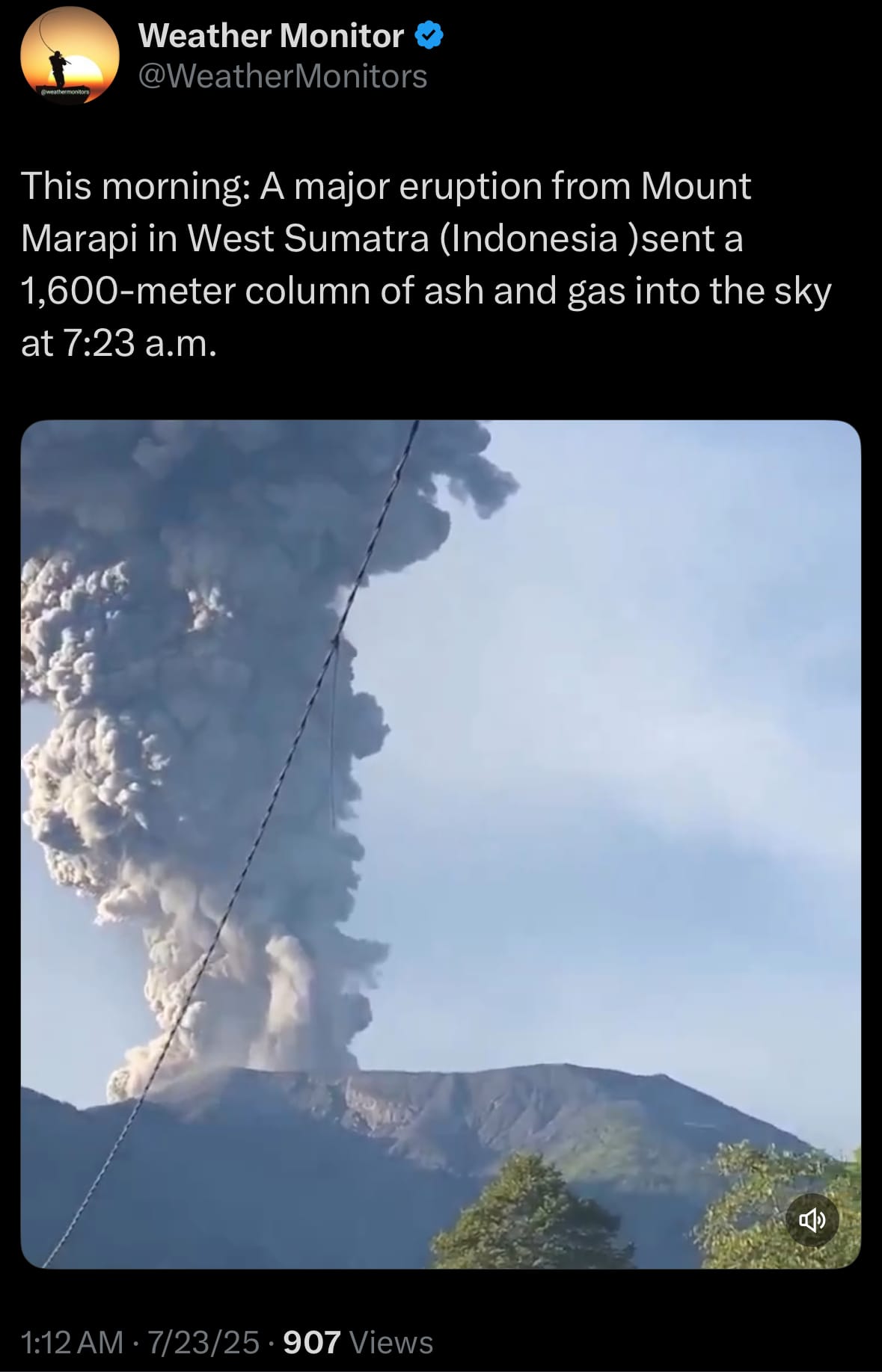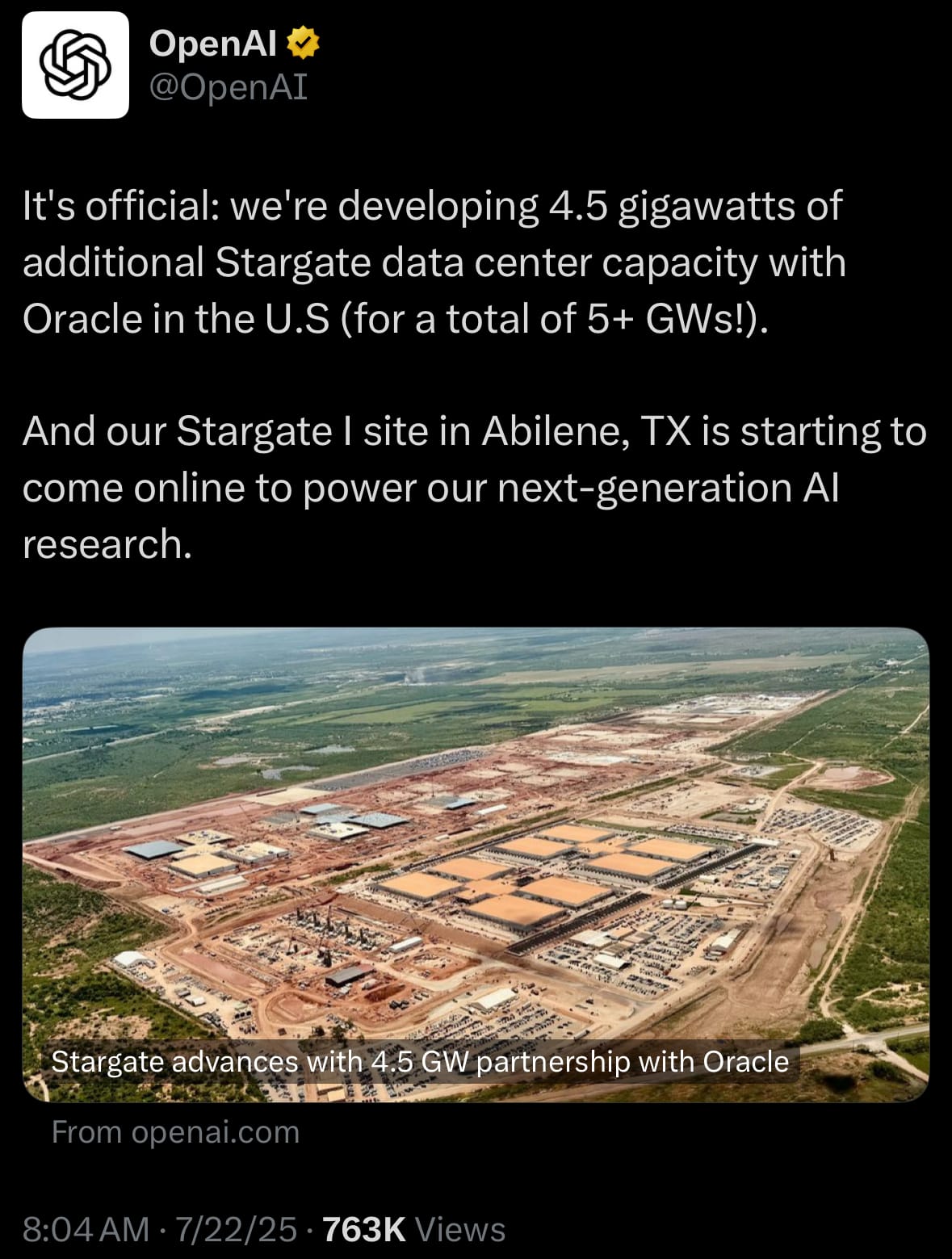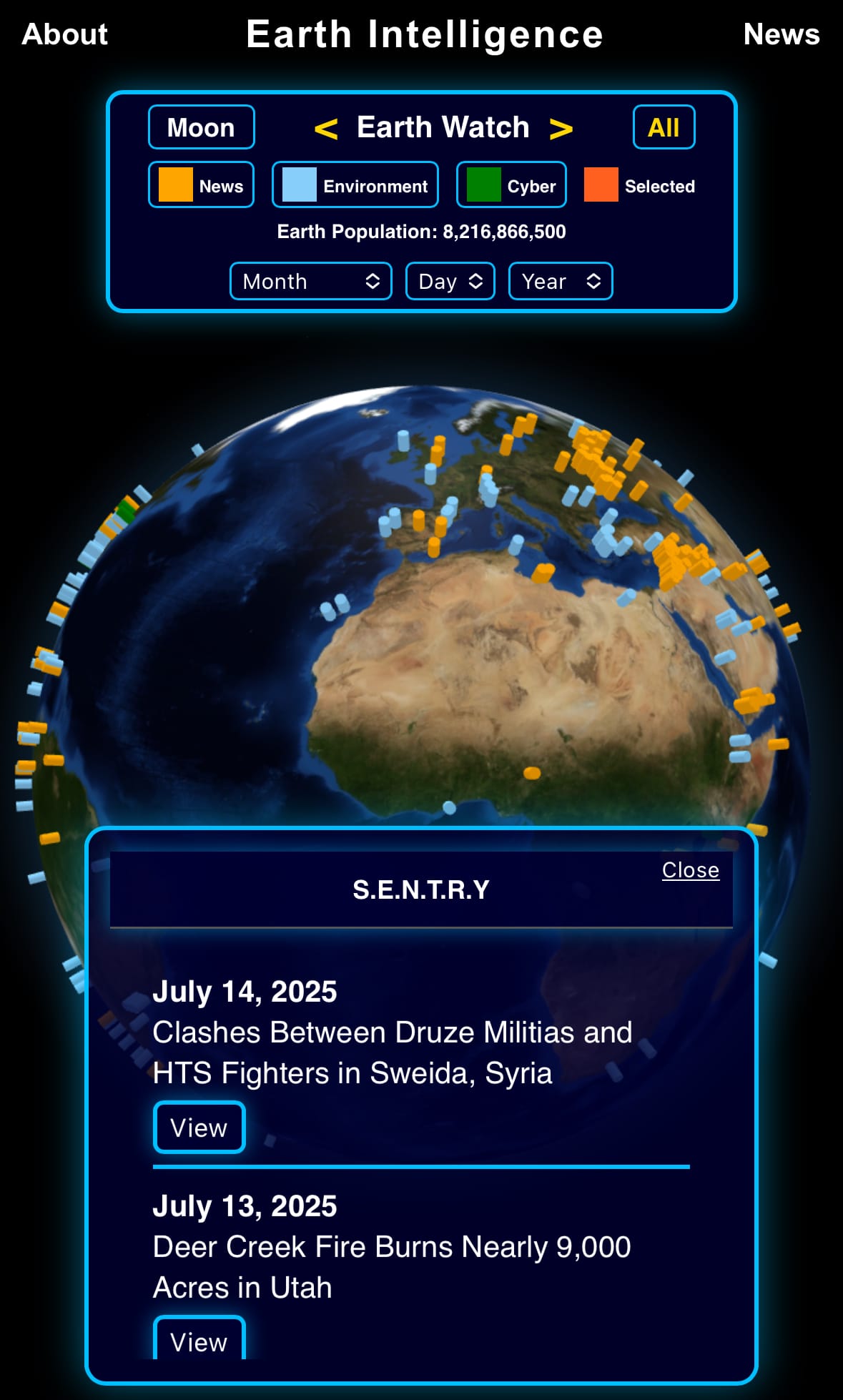Wednesday☕️

Economics & Markets:
- Yesterday’s U.S. stock market:

- Yesterday’s commodity market:

- Yesterday’s crypto market:

Geopolitics & Military Activity:
- On July 23, 2025, NATO conducted a coordinated aerial surveillance mission over the Black Sea, involving a British Royal Air Force Boeing RC-135W Rivet Joint signals intelligence aircraft, escorted by a French Air Force Dassault Rafale B fighter, and supported by three Airbus A330-243MRTT aerial refueling tankers from France, the Netherlands, and NATO's Multinational MRTT Unit. The RC-135W, specialized in intercepting communications, radar, and electronic signals, provided real-time intelligence, while the Rafale B ensured protection for the unarmed platform, and the tankers extended operational endurance through in-flight refueling.

- The mission occurred in international airspace near Romania and Bulgaria, close to Russian-occupied Crimea, and was tracked via open-source flight data platforms. This operation reflects an increase in NATO air activities in the region amid ongoing geopolitical tensions related to Russia's actions in Ukraine, with similar missions noted in recent weeks involving RAF Typhoons, French Mirages, and U.S. P-8A Poseidon aircraft. NATO's efforts focus on monitoring military movements and enhancing allied situational awareness, though they have prompted Russian concerns about potential escalations. No incidents were reported during the flight, continuing a pattern of routine yet tense operations in the area.
Environment & Weather:

Space:
- On July 23, 2025, NASA's Tandem Reconnection and Cusp Electrodynamics Reconnaissance Satellites (TRACERS) mission launched on a SpaceX Falcon 9 rocket from Space Launch Complex 4 East at Vandenberg Space Force Base in California. The launch occurred at 11:13 a.m. PDT (2:13 p.m. EDT), following a one-day delay from July 22 due to range clearance issues. The mission consists of two identical small satellites intended to study magnetic reconnection, a process involving interactions between solar wind particles and Earth's magnetosphere that may affect space weather, satellite operations, and power grids on Earth.

- The satellites are set to operate in tandem orbits to gather data on these interactions in Earth's polar cusps, aiming to provide information on solar energy's effects on the upper atmosphere. The launch also carried three additional NASA small satellites designed to test technologies for environmental monitoring. The Falcon 9 booster, on its 16th flight, landed at Landing Zone 4 on the base after stage separation, and ascent phases such as fairing deployment and second-stage engine cutoff occurred as expected.
Science & Technology:
- On July 22, 2025, OpenAI announced a partnership with Oracle to expand its Stargate AI infrastructure project by adding 4.5 gigawatts (GW) of data center capacity in the United States, bringing the total capacity under development to over 5 GW. Launched in January 2025 with a planned $500 billion investment over four years, the Stargate project involves partners like SoftBank, Microsoft, NVIDIA, and Oracle, aiming to advance U.S. AI development, create jobs, and enhance national computing resources.

- The Oracle agreement includes supplying over 2 million AI chips, likely NVIDIA GB200 models, with OpenAI renting the capacity for an estimated $30 billion annually, roughly three times its current yearly revenue. This effort complements OpenAI’s existing use of Microsoft Azure for AI model training while diversifying its infrastructure partnerships. The Stargate I site in Abilene, Texas, has started operations to support advanced AI research, with potential additional sites being considered in states such as Michigan, Wisconsin, and Wyoming. The project’s scale, equivalent to the power output of several nuclear plants, is expected to generate over 100,000 jobs in construction, operations, and related fields.
Statistic:
- Largest public companies by market capitalization:
- 🇺🇸 NVIDIA – $4.169T
- 🇺🇸 Microsoft – $3.758T
- 🇺🇸 Apple – $3.203T
- 🇺🇸 Amazon – $2.424T
- 🇺🇸 Alphabet (Google) – $2.320T
- 🇺🇸 Meta Platforms – $1.794T
- 🇸🇦 Saudi Aramco – $1.631T
- 🇺🇸 Broadcom – $1.319T
- 🇹🇼 TSMC – $1.237T
- 🇺🇸 Tesla – $1.071T
- 🇺🇸 Berkshire Hathaway – $1.041T
- 🇺🇸 JPMorgan Chase – $812.94B
- 🇺🇸 Walmart – $762.80B
- 🇺🇸 Eli Lilly – $717.25B
- 🇺🇸 Visa – $693.16B
- 🇺🇸 Oracle – $679.85B
- 🇨🇳 Tencent – $640.50B
- 🇺🇸 Mastercard – $509.42B
- 🇺🇸 Netflix – $500.54B
- 🇺🇸 Exxon Mobil – $472.98B
- 🇺🇸 Costco – $418.48B
- 🇺🇸 Johnson & Johnson – $405.56B
- 🇺🇸 Home Depot – $374.54B
- 🇺🇸 Procter & Gamble – $370.74B
- 🇺🇸 Palantir – $363.14B
History:
- The history of data centers began in the 1940s with massive rooms housing early computers like the ENIAC, built for military and scientific calculations. These evolved into mainframe-centric facilities in the 1950s and 1960s, designed with dedicated cooling and power systems to support large-scale data processing for governments and businesses. The 1970s and 1980s introduced smaller server rooms with minicomputers, while the 1990s internet boom drove the creation of colocation and web hosting centers to meet the growing demand for digital connectivity. By the 2000s, virtualization and cloud computing reshaped data centers into highly scalable hubs, with tech giants like Amazon and Google pioneering hyperscale facilities to handle vast amounts of data efficiently.
- In the 2010s, data centers expanded to support big data, IoT, and mobile computing, prioritizing energy efficiency and sustainability to address environmental concerns. Today, AI supercomputers have transformed data centers into colossal, specialized facilities packed with GPUs and advanced hardware for training complex AI models. These modern centers, consuming enormous power, leverage cutting-edge cooling methods like liquid immersion and incorporate renewable energy to mitigate their environmental impact. They also navigate challenges like global supply chain issues and regulatory pressures, reflecting the critical role data centers play in powering the AI-driven world.
Image of the day:

Thanks for reading!
Earth is complicated, we make it simple.
Click image to view the Earth Intelligence System:



Support/Suggestions Email:
earthintelligence@earthintel.news




